For my fifth photoshoot I planned to visit and explore a natural area photographing both plants and flowers and well as water and it’s surroundings. I wanted to focus on drawing inspiration from different artists and photographers I’ve explored, i.e. Wassily Kandinsky’s theories on colour and shape, Rinko Kawauchi’s photography who I explored at the start of the project and my concept of connection between nature and spirituality together as I come towards the end of my project.
I narrowed down my shoot’s image to ones I thought could be considered as final outcomes for this shoot and displayed them in two separate sections as I think they have different qualities to them. The first half I think focus ore on nature, plants and botany emphasising the light and the ranging of warm and cool tones in the landscape. The second half looks at water in more depth and aspects within it i.e koi fish and plants on top and near water.


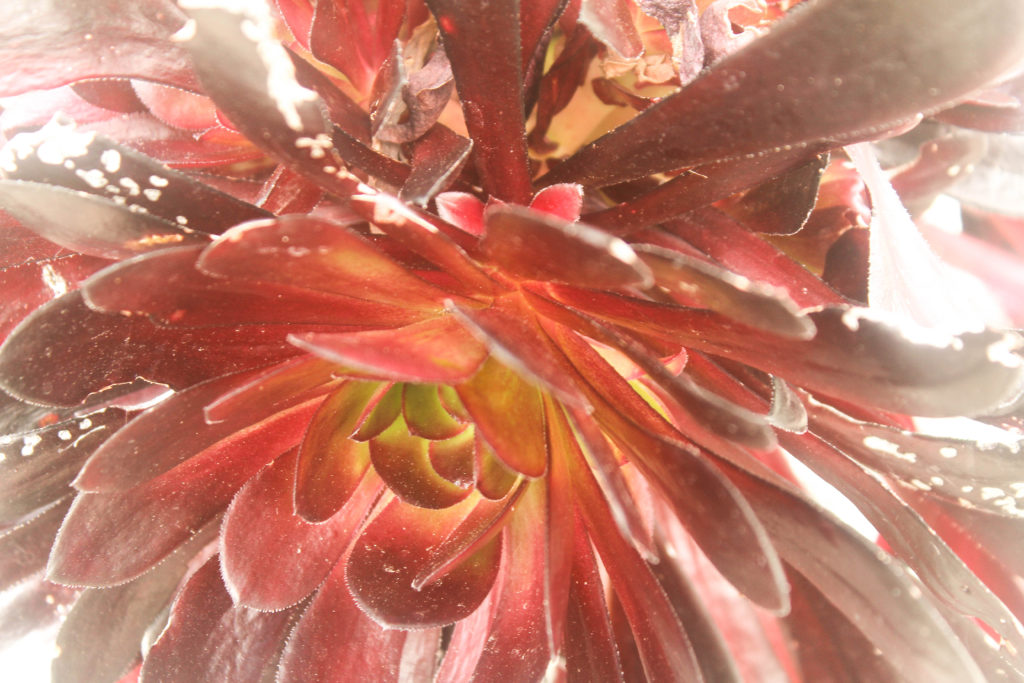
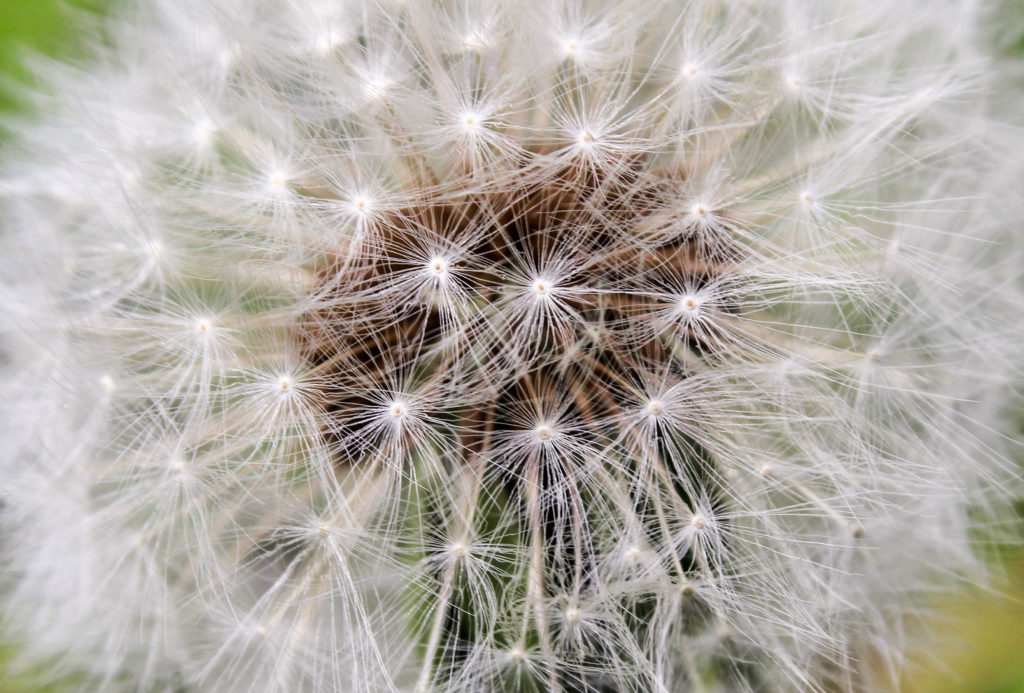
I chose these two images as some of the final outcomes for this shoot as I like the close up, macro angle they both have. I also like the different textures in both the images that contrast from one another. I chose the plant in the first image to photograph as I like the warm red tones, which links to my focus on warm and cool colours in my project. I also like how the leaves come towards the lens because of the angle they taken at, going out of focus the closer they get, which I think this makes the image seem more personal and spiritual. The way the light shines is emphasised on some of the leaves, and around the outside of the frame is effective. The colours in this image range from green/yellow in the centre of the plant to different tones of red, which i think further emphasises the spirituality of this image as the centre is light.
The second image I took with a close up angle as I was interested in emphasising the intricate pattern made by the individual parts of the plant. I chose to crop the original image so the pattern filled up most of the frame and to create a even closer perspective. I also think that this plant represents something that is ephemeral which links to my previous work in this project exploring Rinko Kawauchi who enjoys beauty, joy, and the ephemeral existence of the lives in nature. I also think that this image goes well paired with the first image as I think the colours complement each other, the white in this image linking to the parts of the first image where the light is emphasised.

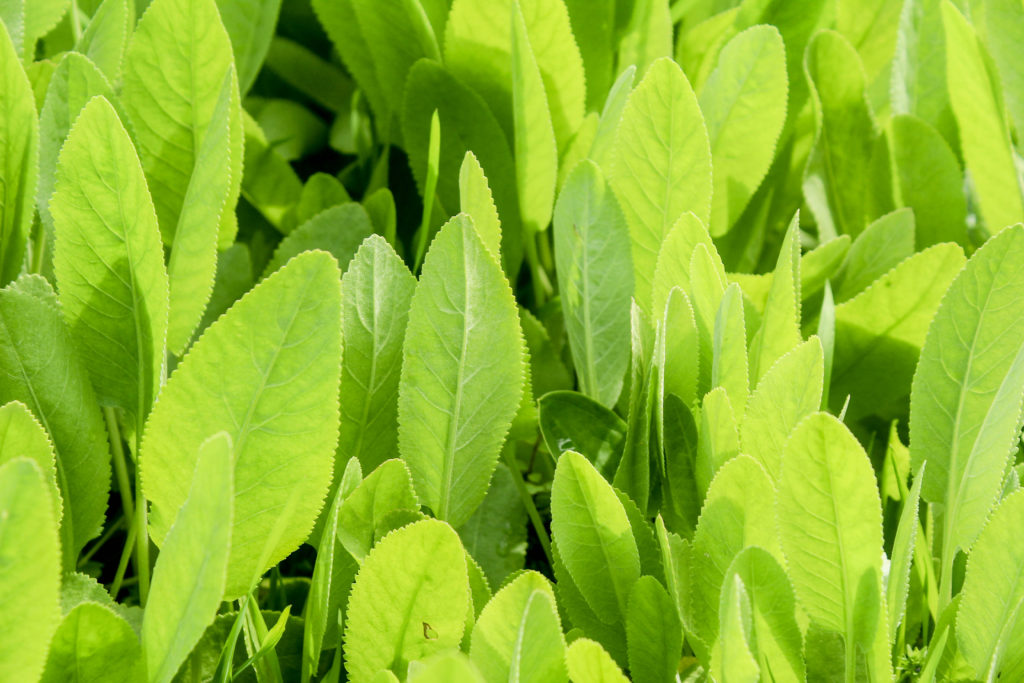
I like the first image of this pair through the intricate patterns and also because of its conceptual meaning. To me, this image represents connections of nature, through the many different lines and branches reaching to fill the entire frame. I also think it reflects some of the ideologies of Wassily Kandinsky through the curved lines going in different directions, reflecting his theories on geometric shapes about how shapes have different energies. In this image the main aspect is the larger trunk and branches coming off the tree, but i also like how them smaller branches have grown off the side and are growing downwards. This is then all complemented by the brown and yellow tones of the image that make the overall appearance ore soft and mystical.
I then contrasted the first image by placing it next the image of bright green leaves and plants. I chose to take this image, filling up the entire frame with the green pattern, as I like how only the cool colour is shown, which I can then contrast this to other warm colour images. It contrasts particularly to the first image of this pair as the leaves in the tree have a more yellow/ green tones, which links to the bright green of the smaller plants in the second image. One difference between the images are that the first is more of a landscape image, whereas the second is a more macro angle which creates a variation of angles.
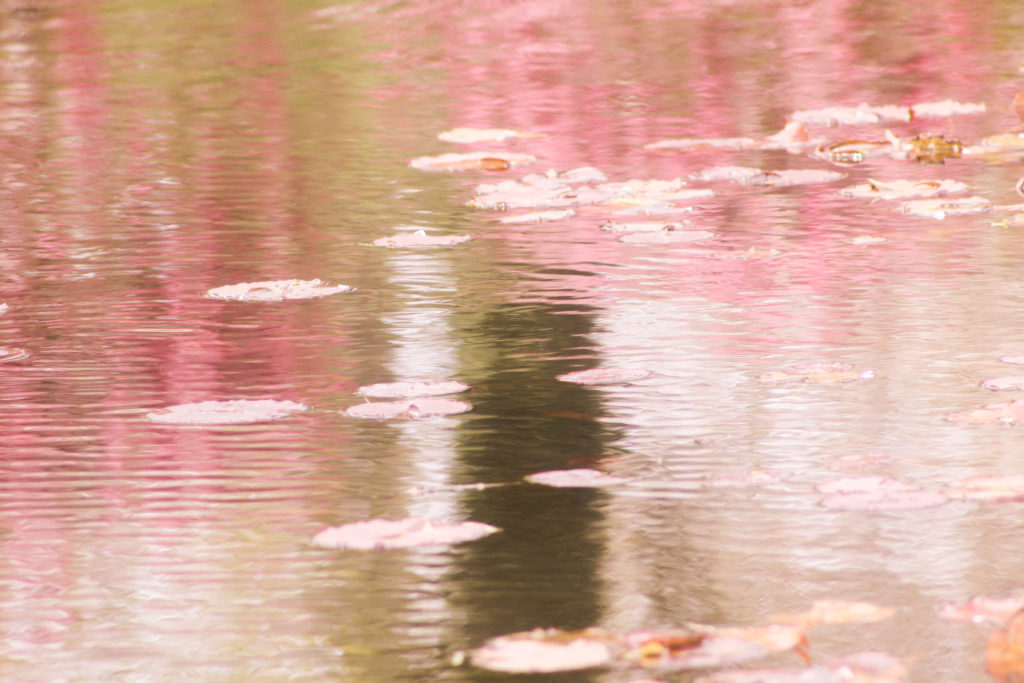
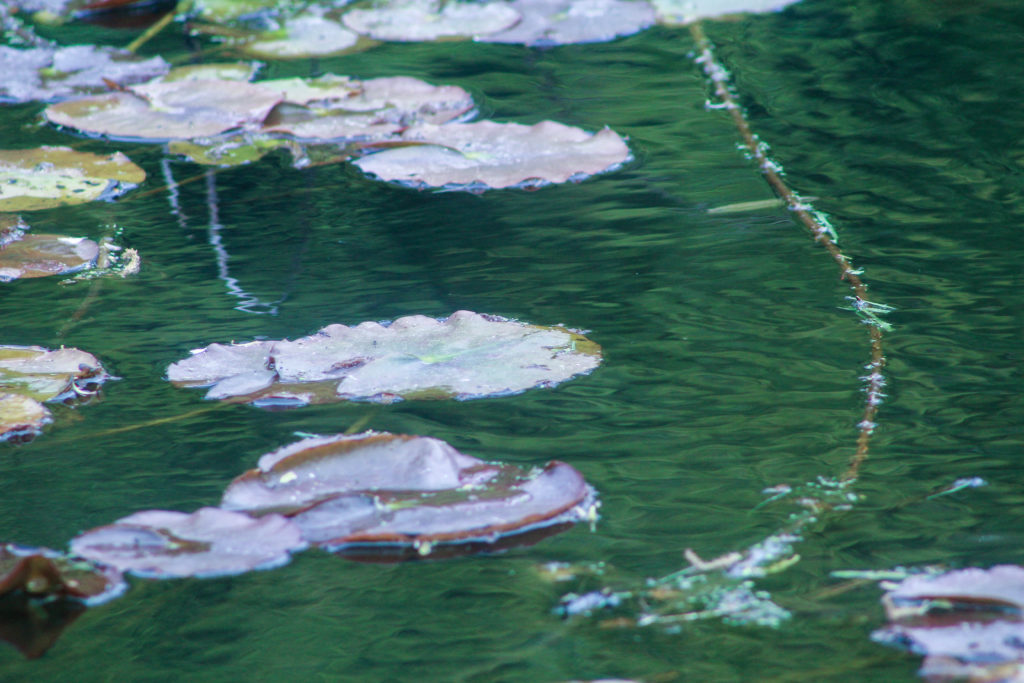
I like these two images displayed together as they are images of the same plants (lily pads) in the same area of water, but because of the surrounding nature, that isn’t shown in the images, the colours displayed in the reflections are completely different. In the first image, was taken next to the image was a Malus floribunda a common name Japanese flowering crabapple, which is why the reflection on the water is different tones of pink. I think that it reflects concept of abstract art more, through the distracted lines in the water and different sections of bright colours from pink,white and brown. What makes this image more interesting is the lily pads on top of the water the break up the patterns created by the ripples in the water, but are still a light colour, so complement the other tones in the landscape.
The second image is a more close up angle I took with a long lens to focus on the shapes of the lily pads and plants, rather than the water. I edited this image to emphasise the blue/green tones which I think is effective and contrasts to the other image well and emphasises the cool colour, rather than the warm ones that were more present before editing. I like the different colour lily pads, that are circular shapes, reflecting Kandinsky’s theories of geometrical shapes having energy, which contrasts the the curved line shape of the branch to the right. This together makes an interesting composition of different natural patterns and geometrical shapes.
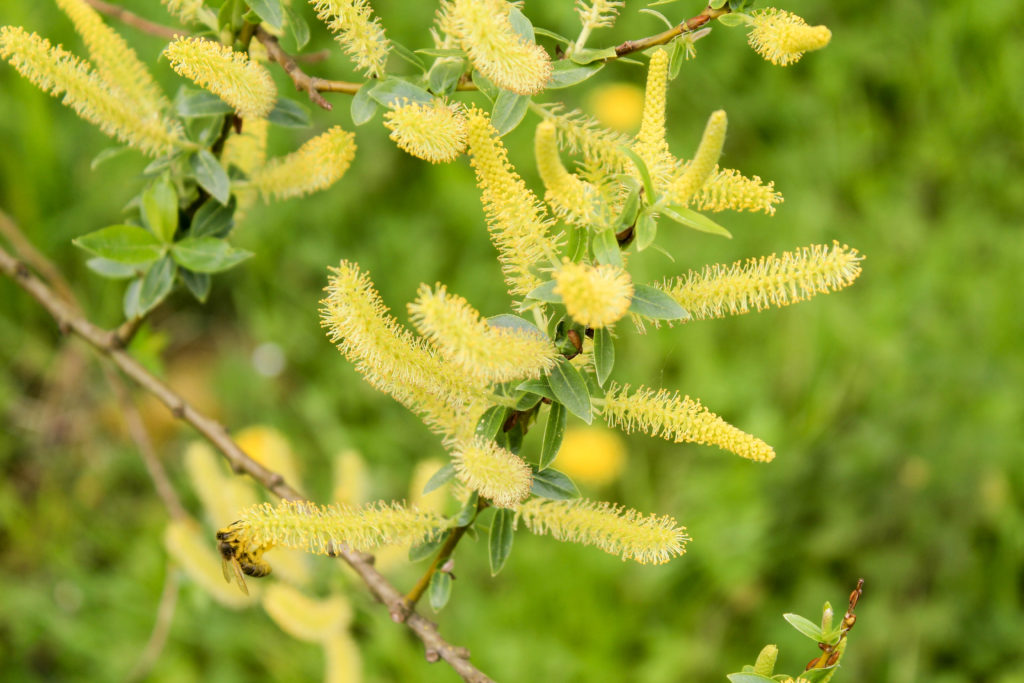

I chose the first image to display as an outcome for this shoot as I like how the bright yellow colour, contrasts with the green behind. This is the first image in this shoot that noticeable contains both warm and cool colours, but because there are yellow undertones the grass behind the plants in the foreground, the colours go together well. I also like in this image how some parts of the plants in the foreground are in focus, but the further away from the camera, the more out of focus the landscape gets. This allows for the main focus of the image to be the plant, but the colour in the background to still be noticeable.
The second image of this pair reminds me of the work by Susan degrees, even though she used light sensitive paper to create her images of plant and water, I think that the shadows of the surrounding plants as a reflection creates a similar effect. The image was taken next to Malus floribunda tree which is why the pink petals are floating on the water. I think this contrasts well to the black reflection on the water and the reflection of the sky which has a pink tone because I edited it to have a warmer appearance. Another reason this image reminds me of Susan Derges work is through the defined shapes of the plants which are reflected on the water. This is similar to Derges as she includes the intricate shapes of the plants and flowers she prints in water on light sensitive paper.


This section of the photoshoot i focused on water aspects of the landscape and what is found in and around the water. I think this is interesting as a different style of image was produced in the second half of this shoot, even though they are from the same area. I displayed below the images I thought were the most effective.
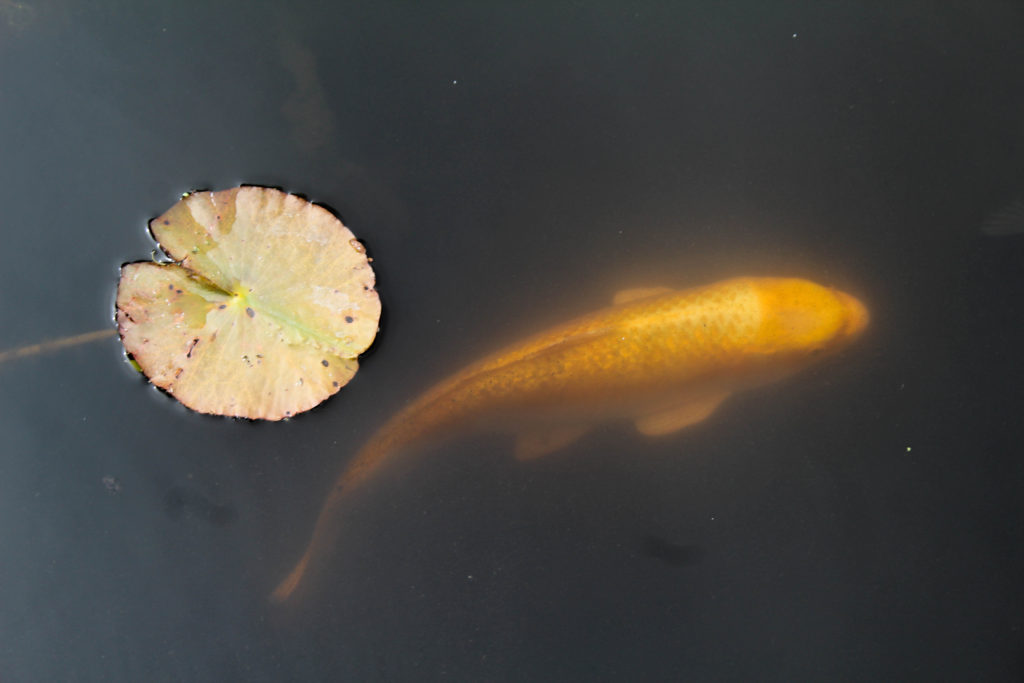
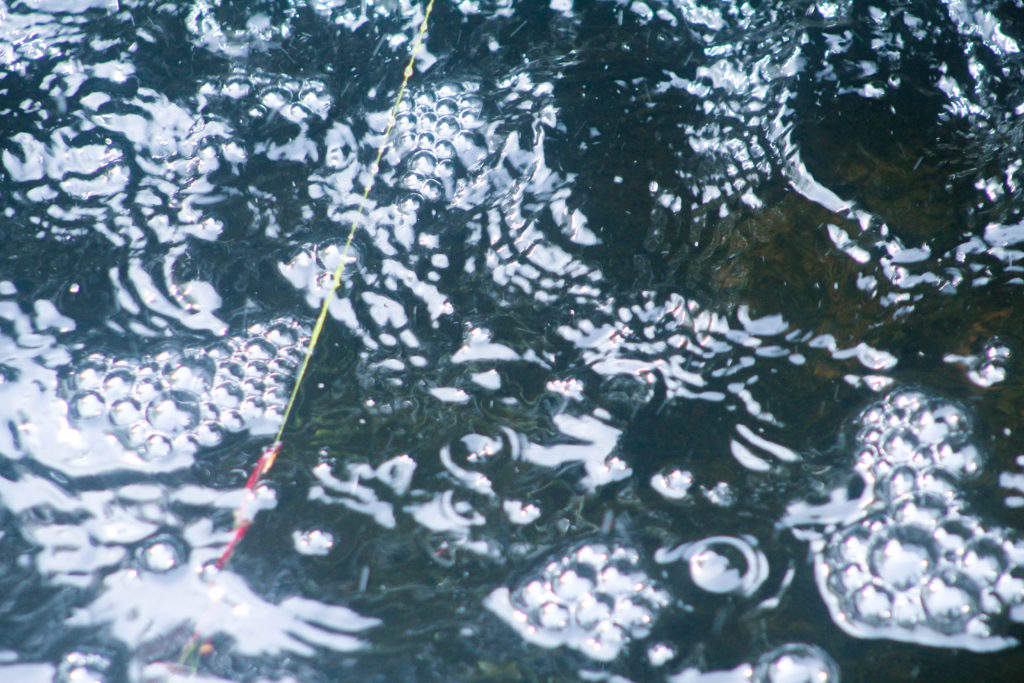
These two images are some of my favourite from this shoot, I displayed them together as I liked how the calmness of the first image contrasts with the the detailed patterns in the second. The first image is of a koi fish which I saw in a pond and decided to photograph this as I knew that symbolises many different things, and has a long history in Chinese and Japanese culture. . Koi Fish meaning in Japan is good fortune or luck they also are associated with perseverance in adversity and strength of purpose. I like the composition of this image is as it’s vey simplisticand only shows two aspects of nature. I think that the lily pad next the fish makes the image and composition more interesting, the full circular shape reflecting some of Kandinsky’s theories of geometrical shapes and circles. The gold/orange colour of the fish is effective and complements the colour of the lily pads they are both warm colours. The black appearance of the water further emphasises the warm colours and also the calm and peaceful atmosphere as there are no waves in thewater distracting from the plant and fish. There are several species of Koi, each with their own defining colors and markings. Accordingly, each type has its own spiritual overtones and meanings. A black fish, called Kumonryu, is named after the Japanese dragon of transformation and is said to signify upcoming life changes. The gold fish, Yamabuki, fittingly symbolises gold, wealth, and good fortune.
I like the second image as its of water, like the first image, but is completely different as I took it near a small water fall which is how the the bubbles were formed. I think it links well to the first image as the same dark tones of the water are also between the patterns in the water and have light areas that are emphasises by the darker parts. One difference is that in the second image I edited it to further emphasise the cool blue tones that could contrast to warm ones. I think that edited this image emphasising the cool colours was more effective than if i edited it to emphasise warm colours as water naturally has a cool tone. I also like how the shape of the bubbles are emphasised moresby the light reflecting off the curved edges, making the shape more noticeable. This is another reason I think these two images go well together as they both contain circular shapes, linking to Kandinsky’s theories on geometric shapes and circles.
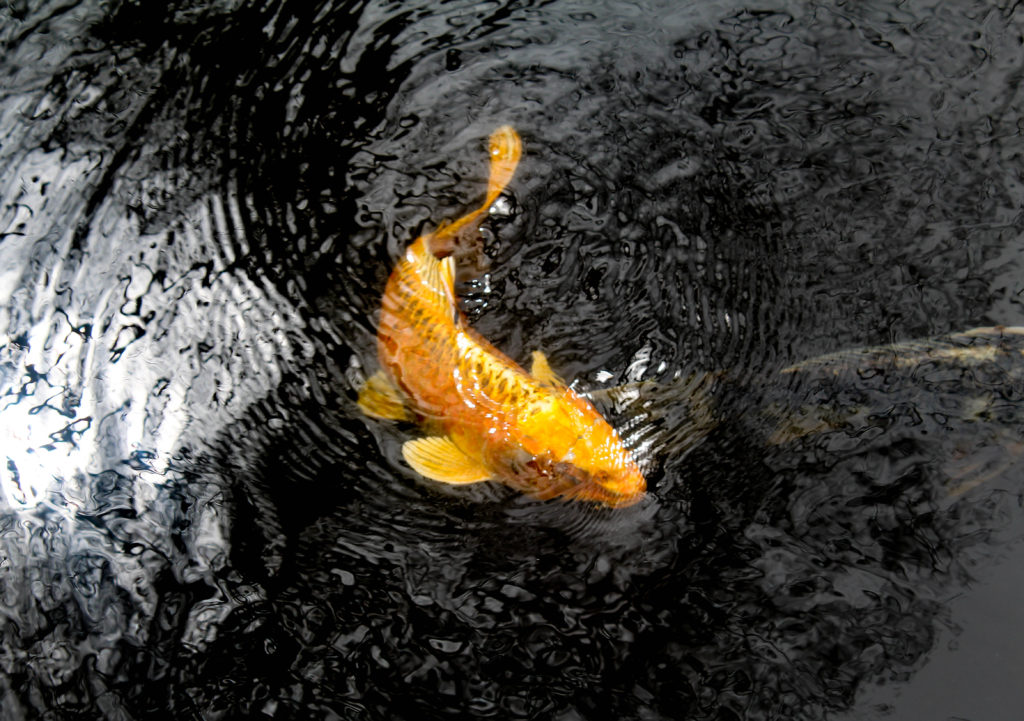
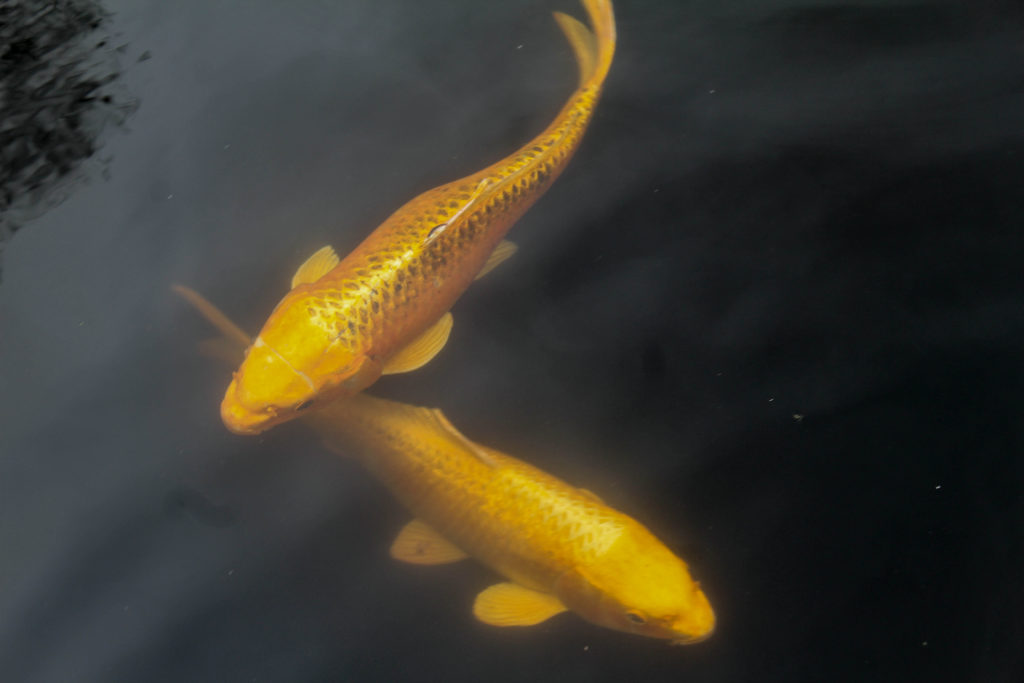
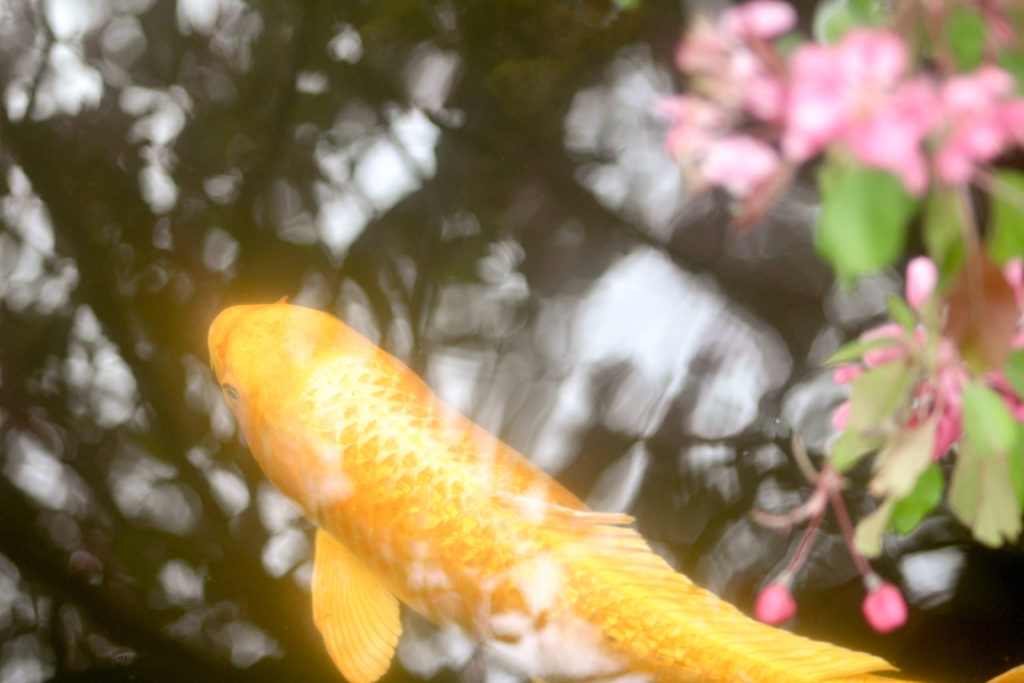
I chose to take different angles of koi fish with different surrounding reflections on the water to see if a plain black background or a more detailed background was more effective. In the first of these three images I photographed the ripples created by the fish coming closer to the surface of the water which creates a more distorted appearance. This image shows more movement than the other image and more reflections of the water through the ripples, ranging from white, grey and black. This makes a more interesting pattern through the ranging colours and the shape that the fishes body is in. The second image is similar to the first image of a koi fish in this shoot as it had has a simplistic plain black background as well adding to the calm and tranquil appearance. The difference between the two is that the second image displays two fish swimming together creating a interesting shape of them overlapping. The ripples and the slight reflection in the top left corner of the image create more texture and pattern. In the third image I included flowers from the Malus floribunda tree in the right side of the image. I kept this part out of focus and kept the main focus on the fish, which I think creates an interesting composition. Out of the three images, the most is going on in this image, as well as the flowers, the reflections of the surrounding trees are shown on the water which shows another side of nature. I think that the brown and white colours of this are effective as the white continues over the fishes body and makes the pattern and scales distorted. I displayed these three images together as I thought it was interesting how photographs of the same subject can have completely different appearances.
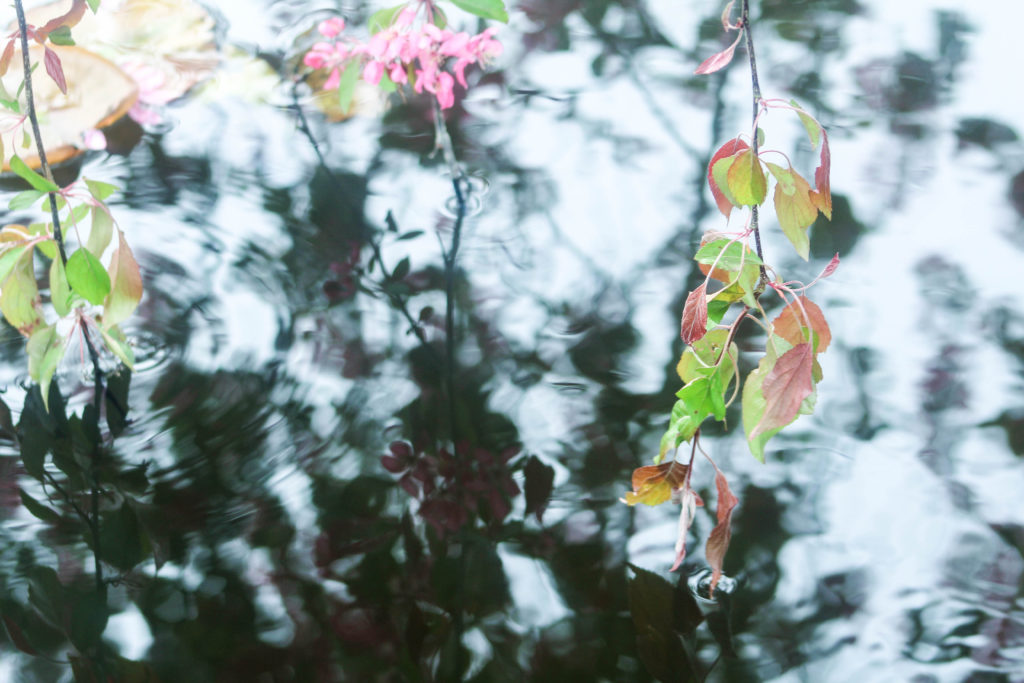
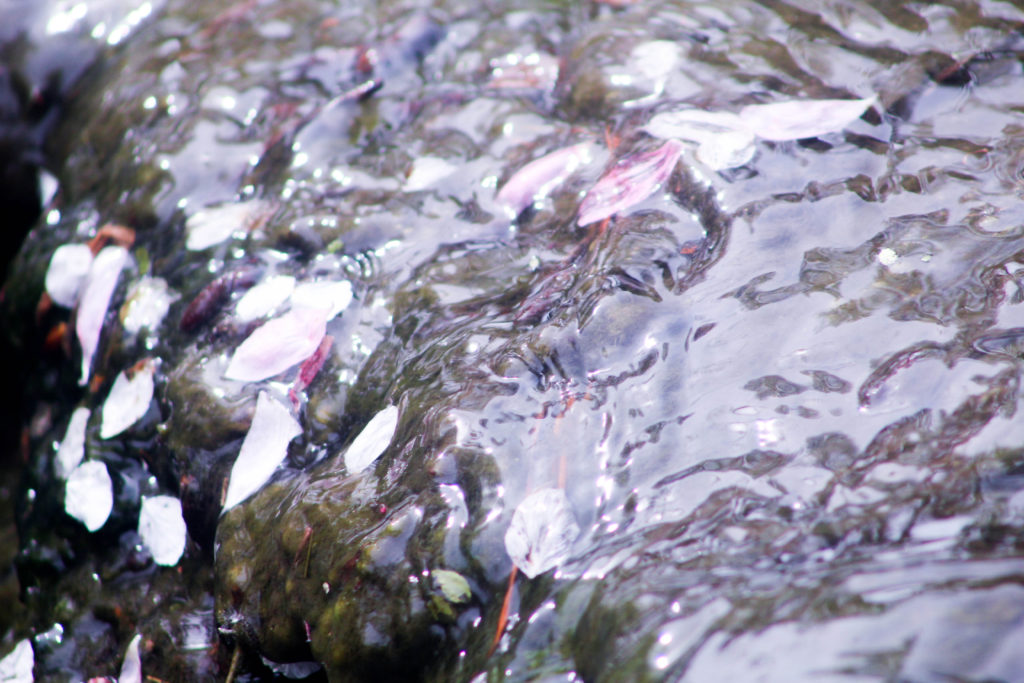
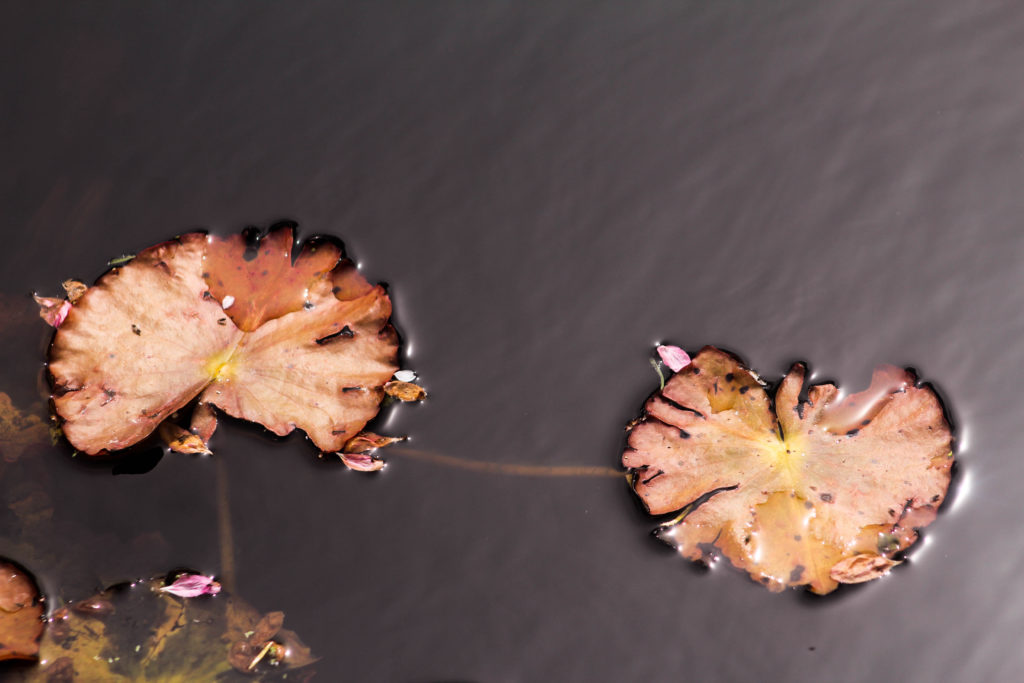
Evaluation
I think this photoshoot was successful in capturing nature, taking inspiration from different artists and photographers I have explored in my project and combining some of their concepts. For example, many of the images in this shoot took inspiration fro Kandinsky’s theories on geometric shapes i.e circles and his thought on warm and cool colours having energies. Other images took inspiration from Susan Derges, where the shadows of the plants on water, reflect the appearance of lots on light sensitive paper. Some images took inspiration from Rinko Kawauchi who explores ephemeral existence in some of her images. I also tried to emphasise the spiritual quality of the nature which i think i did effectively through the colours I’ve emphasised and the intricate details i’ve focused on.
Experimentation
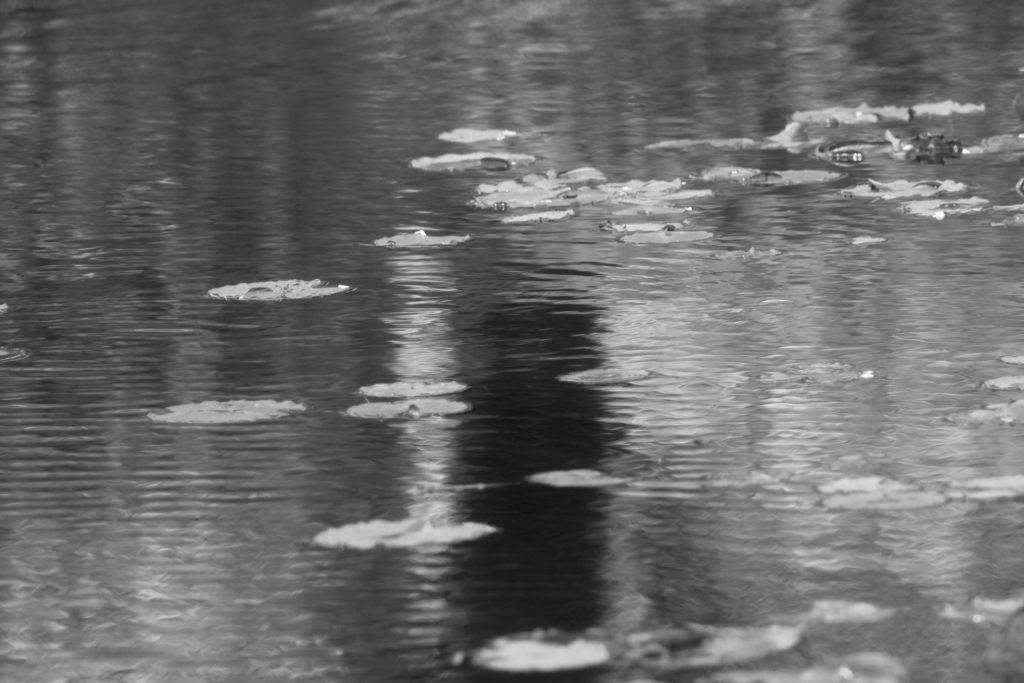

I then decided to experiment by editing these images different warm and cool colours to see which would create the best aesthetic. I think the black and white is effective in emphasising the range dark to light tones of grey in this image, and also highlights the brightness of the lily pads on top of the water. However, for this project I think that because I’ve focused on the different colour that bring people different emotions, that by displaying this image in black and white wouldn’t link as well to the concepts behind my project and to my other image. That is why i decided to also edit this photo different colours that are different from the original pink tones. When comparing these edits I still think that it’s better with the warm tones emphasised rather than changing them to cool colours because I think that what makes this photo interesting is the natural pink tones from the tree in the reflection. By changing the colour of this you cannot notice the natural effect of the tree in reflection.
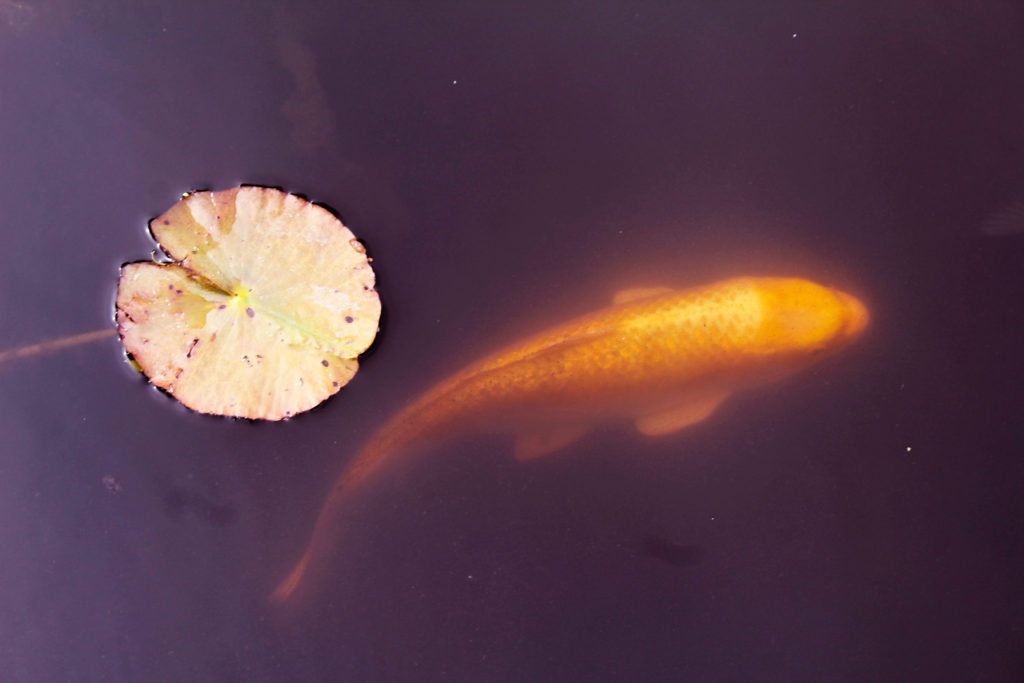



I also experimented with cropping when editing these images to see if a closer angle would make a better composition. In the image of the koi fish, I think that by cropping the image to one section is not as effective as the real composition as it takes away from the simplistic appearance with the negative space surrounding the fish and the lilypad. With the second image of the close up angle of the plant, I found that I liked when I zoomed in one section the image and think that the closer angle focuses on aspects like patten and light even more than the original.
